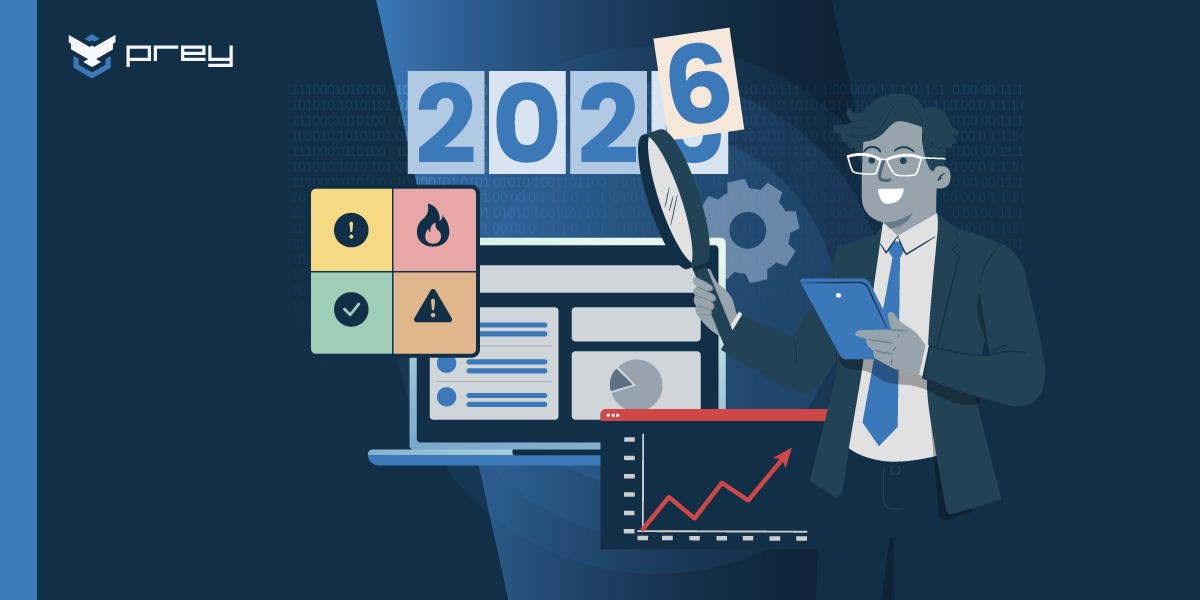As an IT leader, you know that a well-defined IT strategy framework is critical for aligning technology with business goals. It’s not just about keeping systems running—it’s about driving innovation, optimizing efficiency, and ensuring long-term business resilience.
This guide will walk you through the fundamentals of an effective IT strategy framework, with practical insights and real-world considerations to help you build an IT roadmap that supports your organization’s success in a rapidly evolving digital world.
Key takeaways
- An IT strategy framework ensures alignment between technology initiatives and business goals, enhancing overall performance and innovation.
- Key components include governance, IT vision, staffing, security, and emerging technologies.
- Success hinges on business alignment, performance metrics, risk management, and continuous improvement.
- IT leaders must also factor in mobile device governance, legal compliance, tool consolidation, cloud strategy, and AI/automation.
Understanding IT strategy frameworks
An IT strategy framework provides a structured approach to aligning technology initiatives with business priorities. Think of it as your strategic playbook—guiding IT investments to enhance efficiency, minimize risks, and drive measurable outcomes.
For IT leaders, developing a robust IT strategy is more than a best practice—it’s a necessity. With the right framework in place, organizations can navigate digital transformation, enhance operational agility, and build secure, scalable infrastructures.
A deep understanding of the business strategy forms the foundation for an effective IT strategy framework, aiding decision-making and resource allocation to support the company’s vision and strategic objectives.
Key components of an IT strategy framework
An effective IT strategy framework centers on the organization’s IT vision for the future and the specific goals that support this vision.
IT leaders must consider:
- Agility: IT must adapt to evolving business needs and emerging technologies.
- Scalability: Systems should accommodate future growth without disruption.
- Security: Cybersecurity and compliance should be foundational to every IT decision.
- Customer-Centricity: Technology should enhance end-user experience and drive business value.
Governance processes ensure strategies and investments are aligned. Clear policies, defined roles, and skilled staffing are essential to successful execution.
Steps to develop a robust IT strategy framework
Developing an effective IT strategy plan requires a clear understanding of business goals and direction for IT initiatives. This process involves several key steps, starting with assessing current IT capabilities and aligning IT goals with business objectives.
From there, defining an IT governance structure ensures clear oversight and accountability. The following subsections delve into these steps in more detail, providing a comprehensive guide to developing a robust IT strategy framework.
Assess current IT capabilities
The first step is evaluating your existing IT landscape. Conduct a SWOT analysis to identify strengths, weaknesses, opportunities, and threats. Benchmark IT performance against industry standards to pinpoint inefficiencies and gaps. Understanding these factors will inform decisions about technology investments and process improvements.
Continuous monitoring and addressing of these gaps ensure robust IT systems that align with strategic goals.
Align IT goals with business objectives
IT shouldn't operate in a silo. An IT strategy framework ensures IT initiatives align with business objectives. This alignment helps drive both growth and efficiency. Gathering insights from key stakeholders helps design an IT strategy that meets both present and future business needs.
IT investments and technology investments should be strategically aligned to improve customer experience, reduce costs, and create new revenue opportunities. For instance, if a business prioritizes customer focus, IT should respond by enhancing digital channels and delivering personalized services.
Addressing the objectives of individual business units and the entire organization creates a comprehensive and forward-thinking IT strategy.
Define IT governance structure
Governance serves as the backbone of your IT strategy—providing structure, accountability, and clear decision-making authority across all levels of the organization. A well-designed governance model ensures IT investments are evaluated through a business lens and that strategic direction flows seamlessly from the executive suite to technical teams. This includes defining who owns what, how decisions get made, and how compliance is monitored without becoming a bottleneck.
It also requires a culture of transparency and proactive risk management. Effective IT governance should not only ensure standards and regulatory requirements are met but also empower leaders to act quickly when responding to change. When roles are clear and policy frameworks are aligned with business priorities, execution becomes faster, smoother, and less prone to political gridlock.
Address remote and mobile device governance
With remote and hybrid work models now a staple across industries, managing mobile and off-site devices must be integrated into the core IT strategy—not treated as an afterthought. This means taking a proactive approach to endpoint security by deploying MDM and EDR tools that provide both visibility and control over every device in the network. Mobile governance isn't just about securing hardware—it's about enforcing access policies and mitigating risks tied to data loss, theft, or misuse.
Incorporating compliance requirements such as GDPR, HIPAA, NIS2 or regional laws like Chile's Law 21.719 is also essential, especially as devices move across geographies. Integrating features like selective wipe, geofencing, and real-time monitoring ensures these devices remain compliant and within operational guardrails, without sacrificing user productivity.
Plan for compliance and legal forecasting
Compliance is no longer just a checkbox—it’s a continuously moving target that can impact every aspect of your IT roadmap. Legal requirements such as the AI Act, NIS2, and evolving data privacy laws demand that IT leaders stay vigilant and adaptive. Forward-thinking organizations are embedding legal forecasting directly into their strategy development by forming partnerships with legal, compliance, and risk management teams.
This proactive stance allows IT to anticipate changes rather than scramble to catch up. The key is to bake compliance into everyday IT operations—whether that’s through change management processes, vendor selection, or data residency planning—ensuring audit-readiness is built-in, not bolted on.
Integrate AI and automation
AI and automation are more than buzzwords—they’re the fuel powering next-gen IT operations. Strategic integration of AI can streamline incident detection, automate ticket resolution, and optimize resource allocation. Meanwhile, automation frees up human talent by handling routine tasks such as patch management or provisioning, giving IT teams the space to focus on more impactful initiatives.
However, not every process should be automated blindly. The key is to identify repetitive, high-volume tasks that can benefit from standardization while ensuring oversight for systems that make critical decisions. When applied thoughtfully, AI and automation become central to an agile, data-driven IT organization.
Cloud and hybrid infrastructure strategy
Gone are the days when "cloud" was a one-size-fits-all solution. Today’s infrastructure strategies must support a hybrid reality—where legacy systems, cloud-native apps, and multi-cloud environments coexist. The trick lies in developing a cloud strategy that accounts for governance, performance, and cost optimization, without introducing chaos.
This means clearly defining workload placement strategies, deploying CSPM tools to mitigate risks, and standardizing deployment and access controls. A mature cloud strategy ensures every move to the cloud is aligned with business needs and doesn’t create silos or surprise bills. Without this intentionality, organizations risk turning the cloud into a sprawling mess instead of a force multiplier.
Build cross-functional buy-in
An IT strategy is only as strong as its support across the organization. Without cross-functional alignment, even the most technically sound plans can stall. That’s why engaging departments like Finance, HR, Legal, and Operations early in the process is critical. These conversations help IT leaders shape initiatives that reflect broader business needs, not just technical priorities.
Equally important is communication. Translate tech jargon into the language of business outcomes—how uptime affects revenue, or how automation reduces overhead. By showing how IT investments benefit the entire organization, you foster advocates outside the tech team who will champion your initiatives and help clear the path for implementation.
Measuring IT strategy success
Measuring success through Key Performance Indicators (KPIs) is essential for evaluating the effectiveness of IT strategies
Leveraging the balanced scorecard, IT leaders should monitor:
- Financial KPIs – IT cost savings, ROI on IT investments.
- Customer KPIs – customer satisfaction, service uptime.
- Operational KPIs – Process efficiency, system performance.
- Innovation KPIs – Employee upskilling, adoption of emerging technologies.
Identifying clear metrics and benchmarks allows organizations to track progress and measure the success of their IT strategy over time. By tracking a limited number of KPIs, typically between 5 to 7, organizations can avoid confusion and maintain clarity, ensuring effective strategy execution.
Common challenges and how to overcome them
Even the best-laid strategies hit roadblocks. Recognizing challenges early allows IT leaders to navigate around them, not through them.
- Resistance to change: Implement change management frameworks that include executive sponsorship, training programs, and transparent communication. Empathy and early engagement help build trust.
- Shiny object syndrome: Establish an innovation review board that evaluates new technologies against business goals and security posture before adoption.
- Resource constraints: Prioritize initiatives by strategic value and risk exposure. Leverage managed services or automation to extend your team’s capacity.
- Data silos and poor integration: Build data governance practices that promote interoperability and establish API-first integration models.
- Underestimating security needs: Embed security reviews into every project lifecycle—from procurement to deployment—to avoid reactive security retrofits.
Best practices for IT strategy implementation
Strategy without execution is just a wish list. Successful implementation means bringing your vision to life across people, processes, and platforms.
- Communicate the vision: Reinforce purpose and outcomes continuously—not just during kickoff.
- Assign ownership: Every initiative should have a named leader accountable for delivery and KPIs.
- Iterate frequently: Use agile methodologies and quarterly reviews to adapt as business conditions evolve.
- Invest in training: Upskill your team to ensure they’re prepared to adopt new tools and processes effectively.
- Celebrate wins: Recognize milestones to build team morale and momentum.
Summary
Building a robust IT strategy framework requires more than just a plan—it demands strategic vision, business leaders alignment, and continuous improvement. By focusing on governance, emerging technologies, and performance measurement, IT leaders can ensure their strategy not only supports business objectives but also drives sustained growth.
By implementing these best practices, IT leaders can future-proof their organizations, delivering technology-driven business success in an ever-evolving digital landscape.






